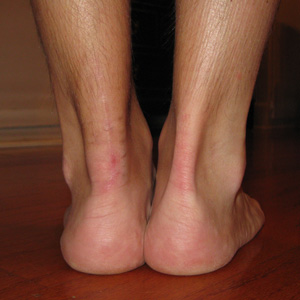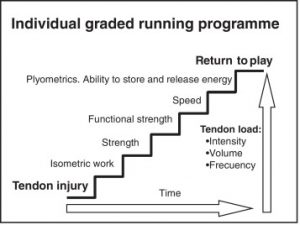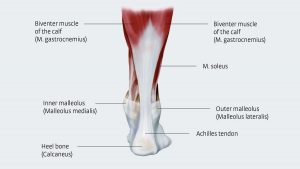The Achilles tendon is the strongest tendon in the human body. When combined with the gastrocnemius and soleus muscles they produce downward (plantarflexion) movement of the ankle. The major role of the Achilles is as an energy storage tissue for locomotion, particularly as the speed increases.

Achilles Tendinopathy on the left
Achilles tendinopathy (AT) is becoming an increasing problem with between 11-24% of runners experiencing symptoms in their lives (Morrissey et al 2011). As the number of people running increases it is safe to assume there will be more people suffering with AT. There are several factors that can lead towards the onset on AT; rapidly increasing loading without adequate recovery, obesity, long periods of standing; but the majority only form over time and are therefore sometimes difficult to pinpoint in the early stages. However, “areas of a tendon can be found to be in varying stages of each of the degenerative stages rather than a global stage for the whole tendon” (Mascaro et al 2018) and still be pain free. It is only when the ‘normal’ part of the tendon is overloaded that the tendon will become unable to transmit force appropriately and therefore become painful.
According to Mascaro et al (2018) “Various stages of Achilles tendinopathy exist: – reactive tendinopathy, tendon disrepair and degenerative or reactive on degenerative tendinopathy.” Each stage requires specific loading parameters to help decrease the pain. The volume of load is person specific and depends on many other factors however an exercise-based programme is the only intervention with strong positive evidence for the treatment of AT (Mascaro et al 2018, Maffulli N, Wong J, Almekinders LC 2003 & Silbernagel, Brorsson and Lundberg 2010).
The following figure highlights the appropriate stages of rehabilitation following an accurate diagnosis of AT. If AT is not managed appropriately it can continue to develop and eventually lead to a tendon rupture. Contact OST if you are having any achilles issues for a thorough diagnosis and rehabilitation programme.

(Mascaro et al 2018)


Recent Comments